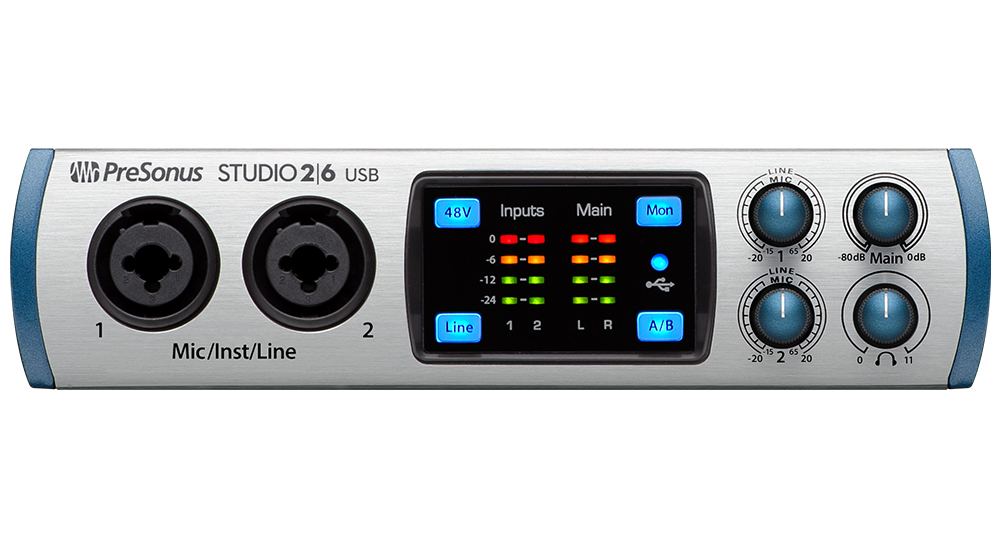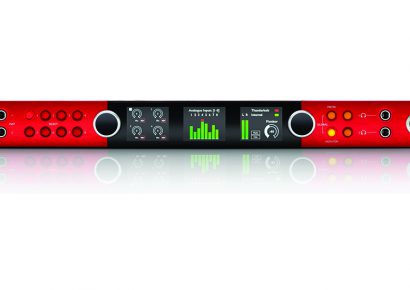At first glance, this may appear to be just another AudioBox, and sure, it is pretty similar in specification as many previous models. But a closer glance at the details makes you realise that the Studio 26 USB carries a better fit-out and clever design that addresses many of the features that were lacking in the AudioBox. You still get two great quality PreSonus XMMAX-L microphone preamps that offer plenty of headroom and a crystal clear audio signal into your DAW. If you don’t have a DAW, PreSonus have included their Studio One Artist software to get you going right out of the box. Working with these preamps before you get to the software is a breeze with the new hardware, as the front panel LED monitoring makes it easy to keep track of what is happening with your signal.
There are two separate LED meters, one showing input level and the other your main output level. This allows you to keep a visual guide of your gain on the way in before overloading your A/D converters and hitting that unfortunate digital clipping realm. Phantom power, line level selection, A/B headphone and monitoring selection options are available on the front panel too, along with a headphone volume control that goes to 11, for those that are going deaf. It’s a clean layout and one that makes it very easy to know what is going on both in and out.
On the rear panel you will find a MIDI in and output for connecting keyboards and other devices. It’s good to see that the old faithful five-pin DIN plug has not been retired just yet. On the output side of things, you get a stereo headphone output along with two pairs of mono outputs for monitor speakers or other hardware. This is ideal for those of you with two pairs of monitors in your home recording setup. It used to seem like a bit of a stretch to expect that, but so many of us are now using two pairs of monitors for a better reference, so it is ideal to have an interface that allows you to run more than one stereo output beyond the headphones.
In all, this is a solid little interface that offers an ease of use and range of I/O that makes it ideal for the modern home recording setup. The hardware itself is tough as guts and the supporting software has plenty to offer if you are yet to decide on a software platform to work with. Upgrading to the full version of PreSonus’ Studio One software is simple too, when you decide to unlock additional features and greater workflow.

